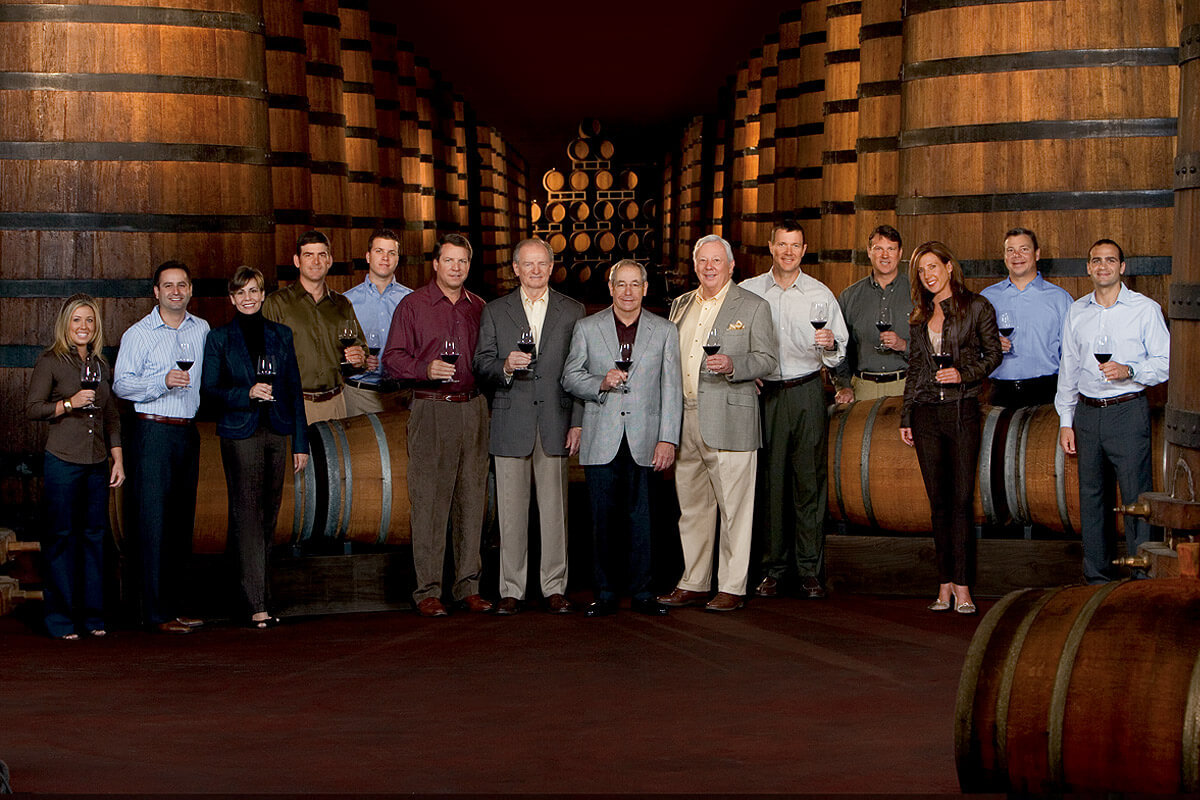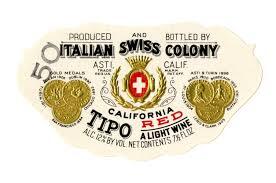Italian American Leadership and the Legacy of California Wine
Italian American leaders like the Rossi family, the Gallo brothers, and Louis Petri played pivotal roles in shaping California’s wine industry, combining entrepreneurial vision with strategic leadership to guide the sector’s growth. Carla de Luca highlights their contributions, noting how figures like Petri demonstrated remarkable foresight and ambition: “He was thinking about volume and getting more wine to more people. He actually created and owned a wine tanker—a giant ship that carried wine.” This tanker showcases the length of his innovative thinking, which not only expanded the distribution of California wines but also marked a turning point in the industry’s modernization.
The Gallo brothers, Ernest and Julio, are perfect examples of a leadership that balanced tradition with business innovation. Scholarly accounts emphasize how their focus on efficient production methods and strategic marketing allowed them to dominate both the mass-market and premium wine segments. According to Tony Lima and Norma Schroder in Ernest Gallo, 1909-2007: A Life in Wine (Journal of Wine Economics), the Gallo brothers revolutionized retailing in the wine industry by pioneering “rack jobbing,” or service merchandising. This involved Gallo representatives stocking shelves, managing displays, and ensuring their products were prominently featured in stores. Ernest Gallo explained their approach: “Our salesmen would come in and would stock the shelf for the retailer. So this would give us the opportunity, while we were stocking, to get the best shelf. And every week or every two weeks, we’d come back and restock that, and each time we did, we’d take a little bit more space, and in a better position.” By combining this service with unique bottle designs, labels featuring recipes, and consistent product upkeep, the Gallo Winery successfully differentiated itself in a competitive market and gained consumer trust. At the same time, they fostered collaboration across the industry, contributing to the establishment of the Wine Institute and advocating for shared standards and practices.
Similarly, the Rossi family, through their work with the Italian Swiss Colony, helped create an early model for commercial success by blending traditional craftsmanship with modern business practices. Together, these leaders brought diverse perspectives that were essential for the industry’s survival and growth, showcasing the unique vision and adaptability of Italian American winemakers. In Chapter 6 of Soft Soil, Black Grapes: The Birth of Italian Winemaking in California (page.117), Gustavo Ceratti explains how Pietro Carlo Rossi, Secondo Guasti, and the Gallo brothers sought to establish and lead a large-scale wine market in the United States by leveraging family, community, and ethnic connections. As latecomers to the California wine industry with limited resources and winemaking expertise, these immigrant winemakers relied on building social and cultural capital and using creativity to maximize their opportunities. Ceratti states that “The specific case of those who entered the wine trade, the inclination toward endogamy coincided with matrimonial strategies meant to optimize available resources and join forces between families active in the same trade. The marriages of Pietro Carlo Rossi with Amélie Caire and Secondo Guasti with Louisa Amillo were crucial for the two men’s careers: not only did their wives guarantee them new and important social connections, but they also turned out to be excellent business partners.”
Finally, the last piece that was the key to the success of the Italian Americans in the industry was AP Giannini, who “valued a handshake more than a contract,” says Carla in the interview. He was critical to building the small businesses because he gave them money to manage equipment and small loans. It gave them that missing piece so that they could purchase material and pay their expenses and workers. For further information, I recommend watching the film AP Giannini-Bank to the Future. On Daitiona’s official website, the production company of the film, they state that “A.P. Giannini - Bank To The Future focuses on the incredible true story of Amadeo Peter Giannini, the man who revolutionized the world of finance by lending money to low-income workers and migrants during the worst economic crises of all times.”
Credits: Daniela Cervantes, Carla de Luca, Lima,
Cinotto, Simone. Soft Soil, Black Grapes: The Birth of Italian Winemaking in California. NYU Press, 2012. JSTOR
Tony. Ernest Gallo (1909–2007): A Life in Wine, Journal of Wine Economics
Signorelli, Valentina, Zoppeletto, Cecilia.A.P. Giannini – Bank to the Future.

